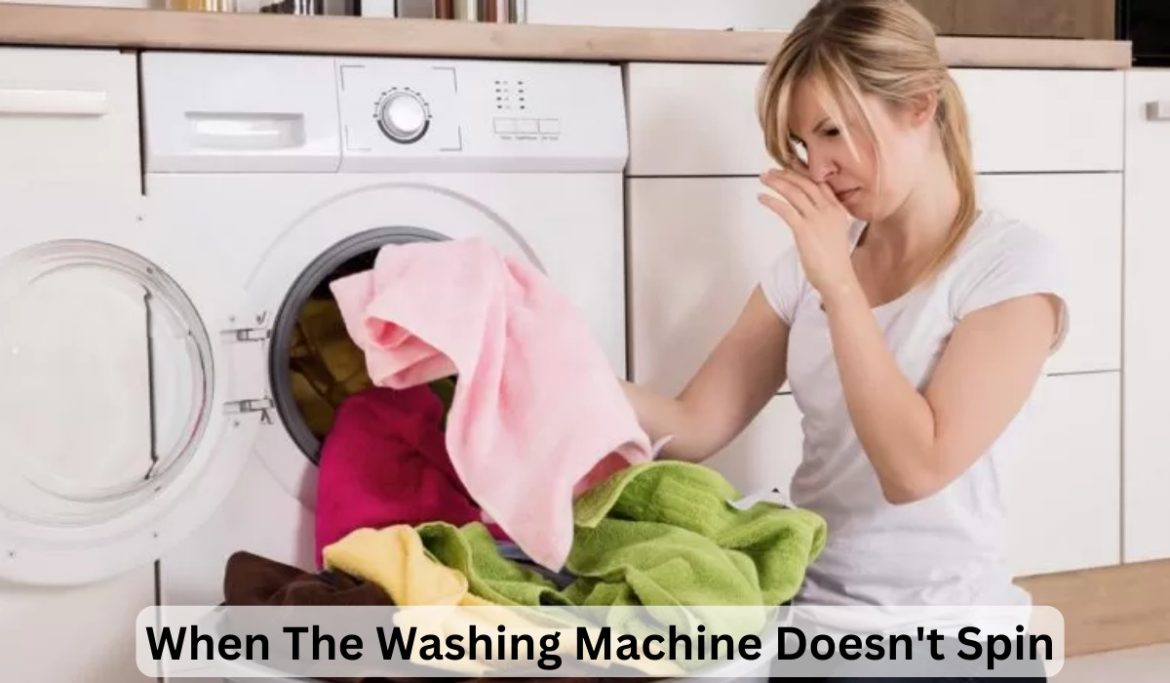It can be a frustrating experience when your washing machine simply won’t spin. Maybe the washer is full, or there may be something blocking the agitator. Whatever the reason, it’s important to diagnose and fix the issue as quickly as possible so you can get your clothes clean. Here are five tips to help when your washing machine doesn’t spin:
1. Check the water level. Make sure there is enough water in the machine to activate the agitator. If there isn’t enough water, add some before trying to start the washer again.
2. Clear any obstructions from the spinning parts of the machine. If there is something preventing the washer from spinning, remove it before trying to start it again.
3. Check for foreign objects lodged in the washing machine’s rotating components. If you see anything that might be causing the machine not to spin, remove it before starting again.
4. Reset or replace any electronic components that may be affected by faulty wiring or a malfunctioning power supply. If all else fails, these steps may be necessary in order to get your washing machine working properly again.
5. Call a professional if fixing the issue yourself doesn’t seem to work.
What Causes a Washing Machine Not to Spin?
There are a few things that can cause your Repair washing machine not to spin. The most common one is a clogged machine. Other causes include broken or missing parts, water levels that are too low, and bad electrical connections. Here are a few more tips to help diagnose the problem: -Check the agitator: If the agitator isn’t moving, it’s likely that there is something blocking it.

When The Washing Machine Doesn’t Spin
Check to see if anything is caught on the blades or between them and the agitator housing.
- Check for water levels: Make sure there is enough water in the tub and in the spin cycle compartment. If there isn’t enough water, shut off the breaker and add more until there is a full cycle.
- Check for power: Make sure there is power getting to the washing machine. There could be a problem with either the cord or the washing machine itself.
How to Fix a Washing Machine That Doesn’t Spin
If your washing machine is not spinning, there are a few things you can do to fix the issue.
The first step is to check the water level in the machine. Make sure that it is full and at the correct height so that the agitator can move around. If the water level is incorrect, it could be causing the washing machine to not spin.
Next, try turning off all of the drains in the house and then turn on the washing machine. If it still doesn’t spin, there may be something blocking the drainage system. Try checking for blockages near sinks and toilets. If you find any blockages, call a plumber to clear them out.
If neither of those solutions works, you may need to replace or repair the motor or belt.
Troubleshooting Tips for a Washing Machine That Doesn’t Spin
If your washing machine doesn’t seem to be spinning, there are a few things you can do to troubleshoot the problem. Check to see if water is flowing properly into the machine: Open the front door of the washing machine and check that water is coming in from both the top and bottom of the machine. If not, fix either an overflow or a low-flow issue. Remove any items from the washer that could be causing obstructions, such as blankets, towels, or large items of clothing.
Inspect all hoses and connections for leaks. If everything looks good, check for foreign objects caught between moving parts inside the washing machine. Remove any objects found and try to start the machine again. If this fails, you may need to take your washing machine to a repair shop. Test the water pressure by filling a bucket with water and placing it next to the washing machine’s faucet.
The higher the water pressure, the weaker (or less powerful) your water supply needs to be before it causes problems with appliances like washers and dryers. You can also test your water’s purity by using a home testing kit like those made by Delta-T or American Water Works Association (AWWA).

